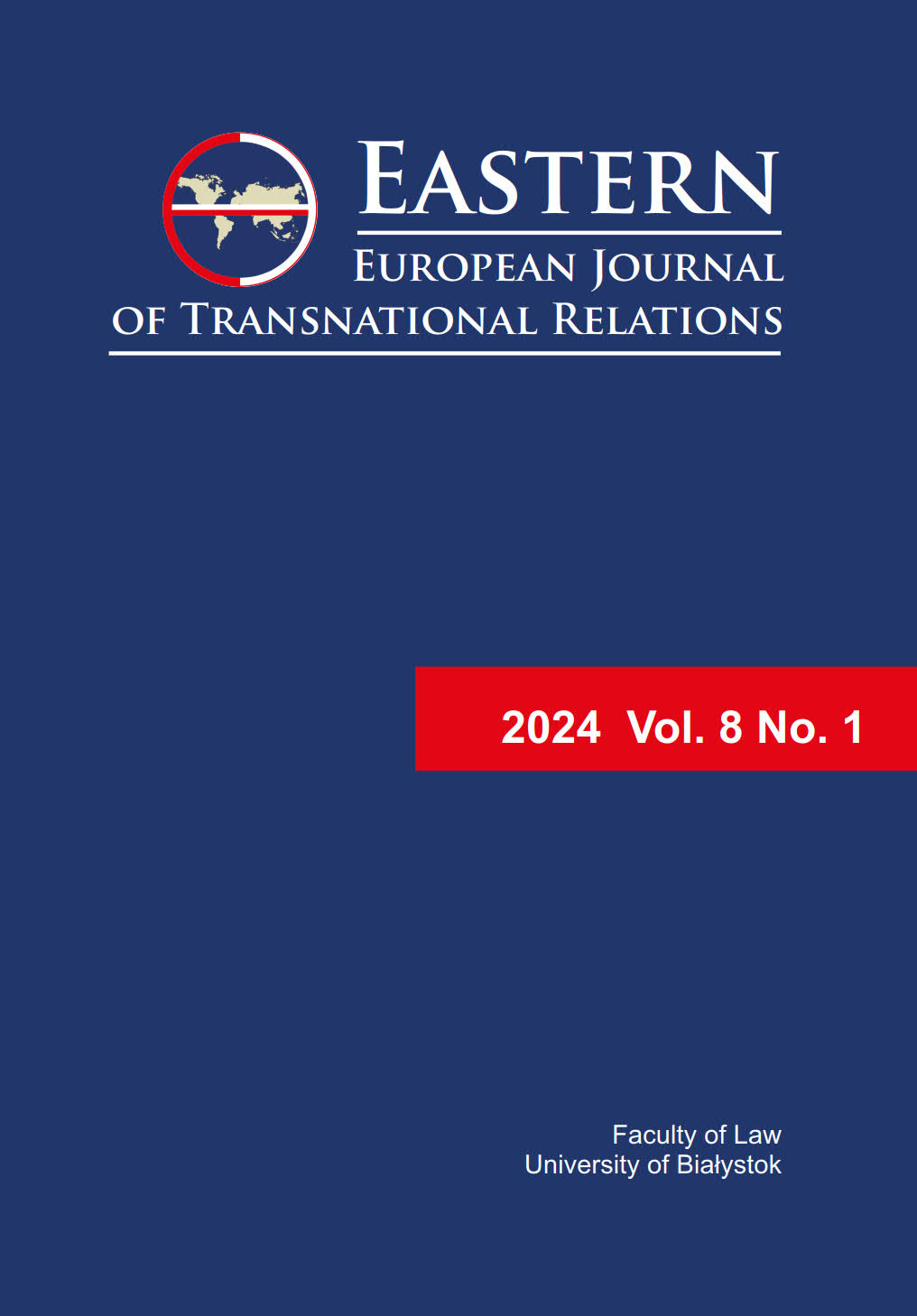Exploring some trademark issues in metaverse from EU law perspective
DOI:
https://doi.org/10.15290/eejtr.2024.08.01.02Keywords:
Metaverse, trademarks, NFT, infringementAbstract
This article addresses some issues of trademark protection in virtual worlds. The increasing presence of trademarks in the metaverse, as evidenced by the growing number of trademark applications for virtual goods and services, is likely to intensify legal conflicts related to trademarks and, consequently, to lead to litigation. The development of virtual reality thus brings challenges for the interpretation and application of traditional concepts and terms used in the trademark system. This article analyzes issues that require consideration in the context of trademark protection in metaverse. It discusses the issues of registering trademarks for virtual goods, assessing the similarities between real world goods and services and their virtual world counterparts, and the enforcement of the rights to trademarks, which were used without the owner’s consent in metaverse. The analysis presented in the article leads to the conclusion that further development of the metaverse will certainly force a redefinition of traditionally applied enforcement principles, including those related to jurisdiction, as well as certain concepts known and interpreted for the application of the trademark system in the real world, such as trademark use.
Downloads
References
Bradley, W.A., & Kolev, J. (2023). Competitive Dynamism in Nascent Markets: Trademarks and Superstar Firm Entry in the Metaverse, USPTO Economic Working Paper. http://dx.doi.org/10.2139/ssrn.4576986.
Carvalho, M.M, & Krishna, N. (2024). Unveiling the Digital Frontier: Exploring Trademark Protection in the EU and US IP Laws Through the Lens of NFTS, JusGov Research Paper No. 2024-01. http://dx.doi.org/10.2139/ssrn.4711984.
Chayka, K. (2021). Facebook wants us to live in metaverse. The New Yorker. https://www.newyorker.com/culture/infinite-scroll/facebook-wants-us-to-live-in-the-metaverse.
Court (First Chamber) judgment of 19 April 2012 in case C 523/10 Wintersteiger AG v Products 4U Sondermaschinenbau GmbH, ECLI:EU:C:2012:220.
Directive (EU) 2015/2436 of the European Parliament and of the Council of 16 December 2015 to approximate the laws of the Member States relating to trade marks, point 18, OJ L 336, 23.12.2015, p. 1–26.
ECJ judgment 5 September 2019 in Case C-172/18 AMS Neve, ECLI:EU:C:2019:674.
ECJ judgment of 12 November 2001, in Case C-206/01, “Arsenal”, ECLI:EU:C:2002:651.
ECJ judgment of 29 September 1998 in case Canon, C‐ 39/97, EU:C:1998:442.
ECJ judgment of 29 September 1998, in Case C-39/97, “Canon”, ECLI:EU:C:1998:442.
ECJ judgment of 3 March 2016 in Case C-179/15, “Daimler”, ECLI:EU:C:2016:134.
EUIPO (2023a). Trademarks Guidelines.
EUIPO (2023b, February 28). Decision R 2357/2022 - 2, METAVERSE FOOD.
Foerg, M. (2022). Intellectual Property Considerations and Challenges in the Metaverse. http://dx.doi.org/10.2139/ssrn.4484745.
INTA (2023). Trademarks in the Metaverse White Paper. https://www.inta.org/perspectives/inta-research/trademarks-in-the-metaverse-white-paper/.
Michaels, A.C. (2022). NFT Litigation is Raising Novel Trademark Questions. http://dx.doi.org/10.2139/ssrn.4194097.
Murray, M.D. (2022). Trademarks, NFTs, and the Law of the Metaverse. http://dx.doi.org/10.2139/ssrn.4160233.
Nwaeze, G. (2022). NFTs and Metaverse: Exploring the Challenges and Prospects for IP Lawyers in the Digitalized World. http://dx.doi.org/10.2139/ssrn.4198128
Okafor, R. (2022). NFTs as a medium for Trademark Infringement. http://dx.doi.org/10.2139/ssrn.4612078.
Öztürk, Ö. (2023). Intellectual Property in NFTs and Legal Challenges. http://dx.doi.org/10.2139/ssrn.4322697.
Park, K. (2022). Trademarks in the metaverse. WIPO Magazine. https://www.wipo.int/wipo_magazine/en/2022/01/article_0006.html.
Refusal of application for a European Union trade mark 018647205, of 8 February 2023.
Regulation (EU) 2017/1001 of the European Parliament and of the Council of 14 June 2017 on the European Union trade mark, OJ L 154, 16.6.2017, p. 1–99.
Regulation (EU) 2017/1001 of the European Parliament and of the Council of 14 June 2017 on the European Union trade mark, OJ L 154, 16.6.2017, p. 1–99.
Regulation (EU) No 1215/2012 of the European Parliament and of the Council of 12 December 2012 on jurisdiction and the recognition and enforcement of judgments in civil and commercial matters, OJ L 351, 20.12.2012, p. 1–32.
Saw, C.L., & Chan, Z.W.S. (2023). The Subsistence and Enforcement of Copyright and Trade Mark Rights in the Metaverse. Journal of Intellectual Property Law & Practice, SMU Centre for AI & Data Governance Research Paper No. 03/2023. http://dx.doi.org/10.2139/ssrn.4452938.
Downloads
Published
Issue
Section
License

This work is licensed under a Creative Commons Attribution 4.0 International License.
1. The Author declares that he or she has created the written work and holds exclusive and unlimited copyright /both moral and property rights/ and guarantees that no third parties have rights to the work.
2. In the view of the Copyright and Related Rights Act, a work must fulfill the following criterion:
a) be a manifestation of creative work,
b) have an individual character („author’s personal stamp”),
c) have a set form.
3. The Author declares that the text has not been previously published (under the same or different title, or as a part of another publication).
4. The Author allows (grants a non-exclusive license) the publishing house of University of Białystok to use the scholarly text to:
- preserve and multiply by means of any technique; save in a digital form with no limitations as to the manner and form of digital preservation;
- upload online with no limitations as to the place and time of access.
5. The Author grants consent for editorial changes made in the work.
6. The Author grants the University of Białystok rights free of charge for the duration of property copyright with no territory limits. The University has the right to grant sublicenses in the acquired rights.
7. Granting a non-exclusive license allows the Author to preserve their rights and allows other parties to make use of the work according to sublicensing agreement with provisions identical as those of Attribution 4.0 Internacional License (CC BY 4.0), available online at: https://creativecommons.org/licenses/by/4.0/.
8. The Agreement has been concluded for an indefinite period of time.
9. Because of costs born in preparation of the work for publishing, the Parties oblige themselves to act in good faith and refrain from declining to grant licenses.
10. To all matters not settled herein, provisions of the Civil Code and Copyright and Related Rights Act of 1994, February 4 shall apply.
11. All disputes shall be resolved by a court of local jurisdiction for the place of seat of University of Białystok.


